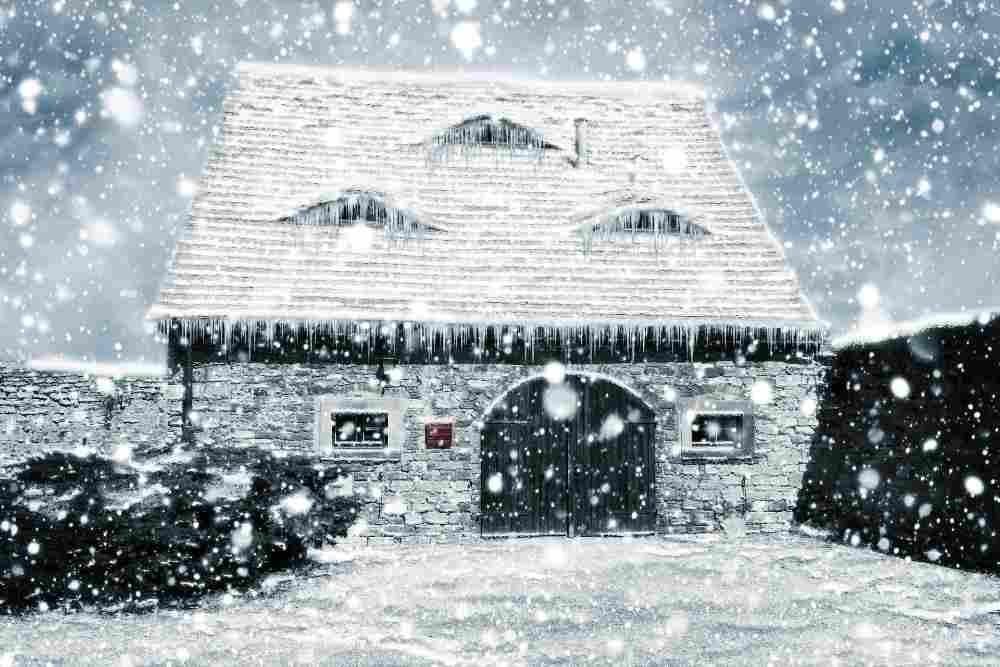Mold during winter is a concept that many would never think of as a possibility. Yes, mold growth is less likely to occur in the winter months than during the hot and humid seasons. However, there are many causes of winter flooding and maintenance issues. Hence the reason for elevated moisture in the air even during the winter months. Mold spores are small and microscopic. They are mainly contained near water sources and also in the air within our homes and outside. During this season, the air is rather cold and, in this case, humidifiers are used in many homes. However, monitoring of the home humidifiers is a crucial measure to prevent high humidity levels which provide a conducive environment for a more active mold formation environment. Homeowners should ensure that humidity levels are not too high to prevent mold formation.
3 Tips to Prevent Black Mold During Winter
Mold is formed as a result of improper drainage systems in and out of the house. Consequently, you find that during this season, some rooms have water on the floor due to drain leaks. It is rather advisable to identify the sources of the leaks. You can figure out whether your home is damp enough to grow mold with the help of a black mold test kit or similar devices and make immediate changes, by avoiding the accumulation of water in any one place. In some cases, snow may be the cause of leaks on the roofs. Which melts down into the leaks progressively and slowly enhancing mold formation.
1. Leaving House Unoccupied for a Length of Time During Holiday Travel
Holiday vacation disaster at home can be prevented. Preventing pipes from freezing is essential before leaving for that planned holiday vacation. When pipes freeze they become susceptible to cracks and bursts due to the accumulation of pressure inside them. When pipes burst then water is released into the surrounding hence leading to floods in the house and the compound. The last thing one would want is for their holiday vacation to be cut short due to avoidable circumstances like preventing the pipes from freezing. Flooding in the house not only causes disruption of the holiday vacation, but also the damage of property. Economic loss due to huge expenditures to repair what was not insured. To read all of our traveling tips click here.
2. Preventing Freezing Pipes
Freezing pipes are a common occurrence in the Kansas City area during this time of year. With cold temperatures especially in the winter whereby pipes are exposed to freezing temperatures. When water is in the pipe then it may lead to the expansion of the pipe and in extreme cases. The pipe may crack or burst hence damaging the water supply system. Pipes that are more predisposed to freezing are those within the interiors and the unheated areas of the house like the basements, garages and the attics.
Also concerning the water pipes. The process of installing proper plumbing systems is very crucial for the prevention of mold during the winter season. For the washroom pipes, kitchen pipes and all the drainage pipes, in general, should be maintained and repaired. Very typical for the tubes to block or bust out due to the constant flow of water. Therefore, cleaning, repair work, and proper installation throughout the season are essential. To avoid bursting of pipes and overflow of the impurities. Probable sewage on the surface of the ground leading to the greater formation of mold.
3. Prevent Ice Dams
Because heat rises, the heat from your house naturally goes to the highest point of your house, which in most cases is an attic. Now, if your attic is insulated well and to the proper R-value, then the heat will stay inside. If not, then you will probably have the majority of your heat going right out of your house. For cold Midwestern areas, it is recommended that you have between R39-R69. To attain the higher R-value, there is a greater depth of insulation required.
For example, 10″ of blow-in insulation is approximately an R25 value. Standard building practice is to only put 6-12″ of insulation in attics. Which is much less than even the minimum amount suggested by Energy Star. Adding an additional 10 or 20 inches of insulation isn’t that expensive. Also, it will be much more beneficial in the long run. If your attic doesn’t have the insulation it needs, your house will lose heat through the attic and can cause ice dams.
Ice damming also can cause mold during winter. It is the build-up of ice on the underside of roofs that melt and are stagnant. This process is as a result of the heat loss from the house. It causes the snow to melt and drains into the homes slowly destroying the walls and developing mold. This is prevented by manually removing the snow from the roofs. Also making channels on the ice dams allowing the water to drain off the roof. This ensures no breeding grounds for mold formation on the roofs are destroyed.
